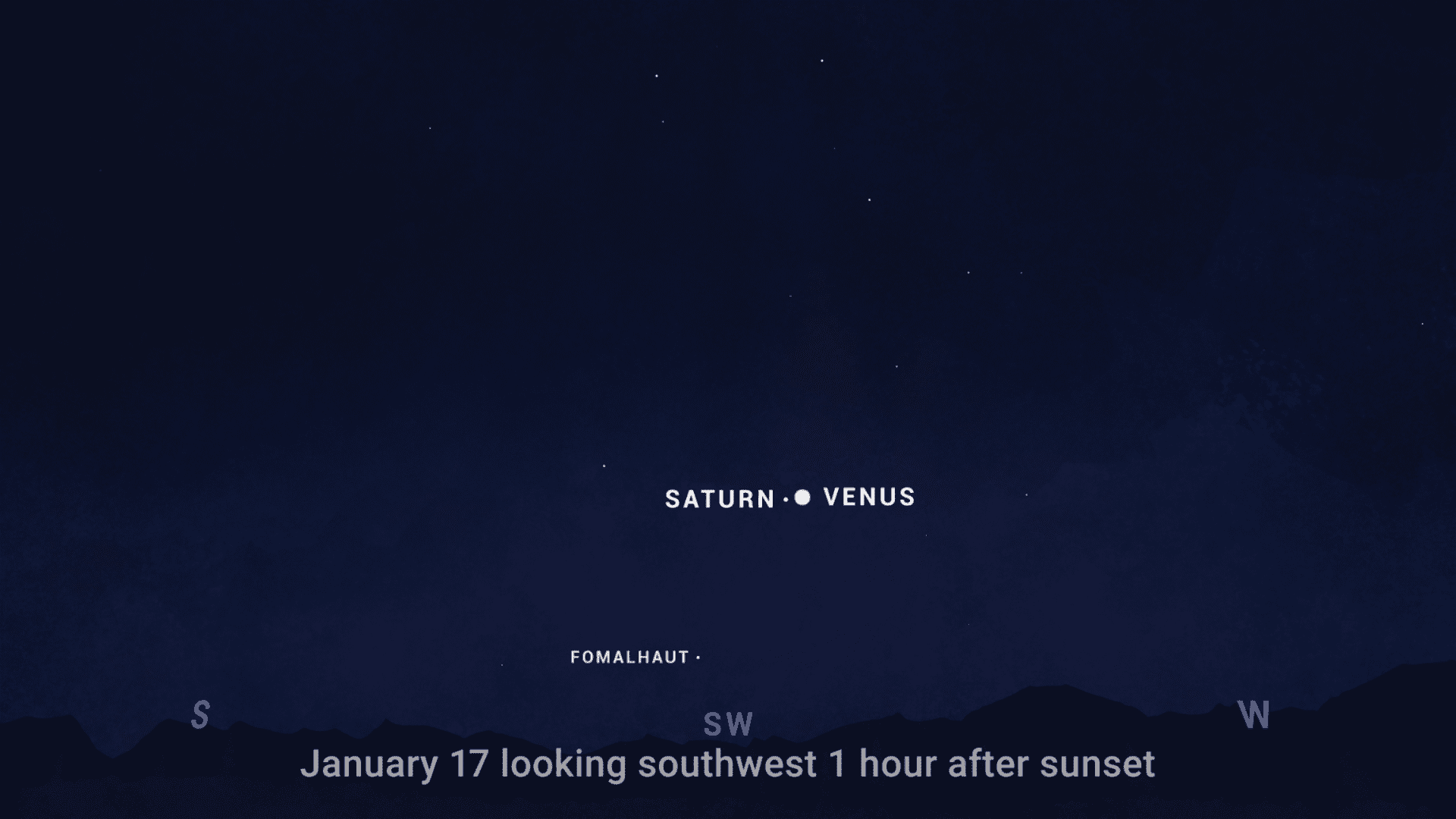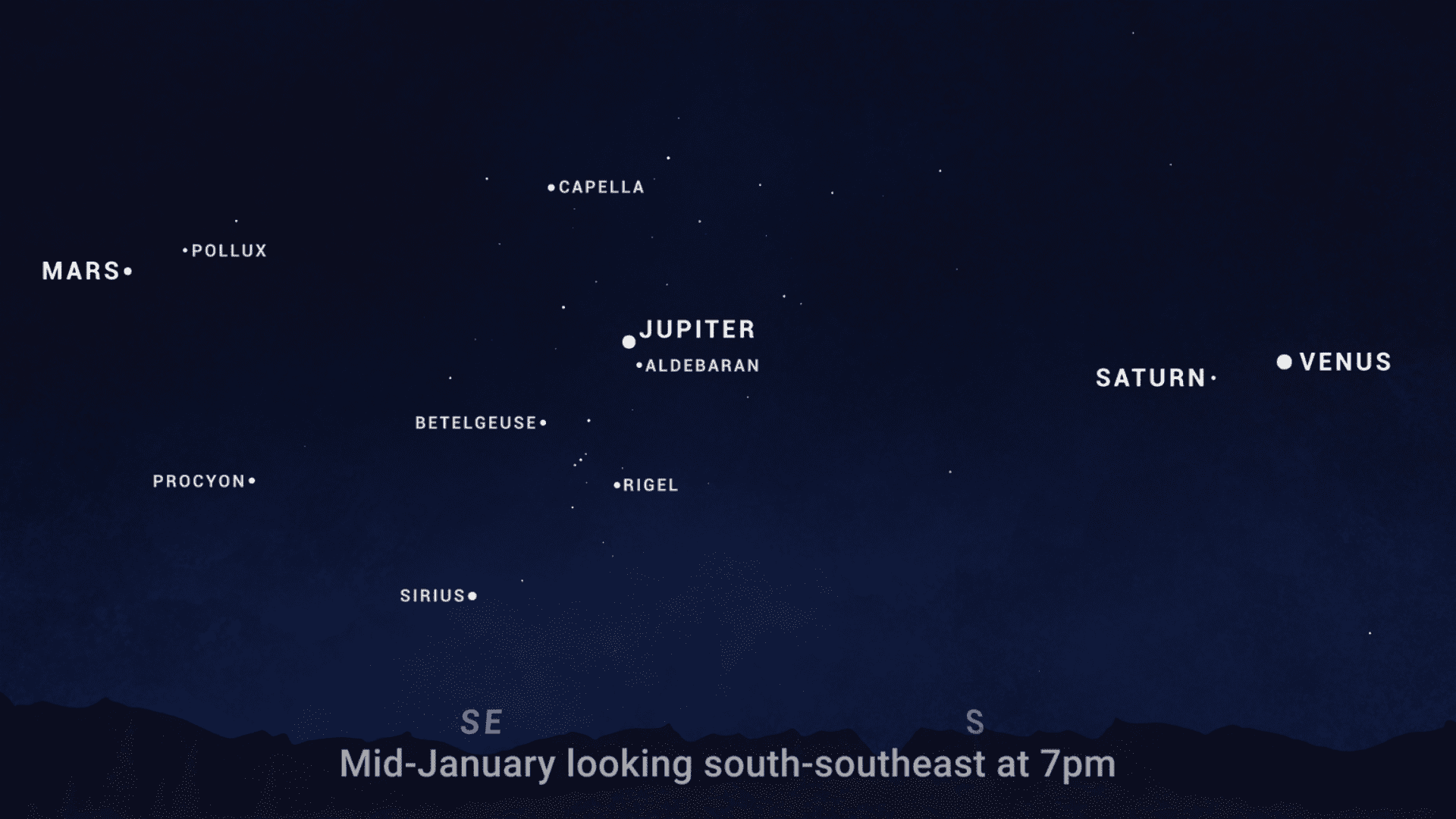Skywatchers will be thrilled to learn that four plants will be visible throughout January. However, according to NASA’s tips for skywatchers for January, we ring in the new year with several celestial events.
Moon Occults Mars
For those watching the sky in the continental U.S. and Eastern Canada, the Moon will appear to pass in front of Mars on the evening of January 13. The Moon will appear to pass in front of Mars over a few hours as the pair rise into the eastern sky. The action will occur around 8:44 pm EST that evening. Exact times vary depending on location, so NASA suggests checking your favorite skywatching app for details.

Venus and Saturn’s conjunction
The two planets get closer and closer to each other this month, reaching the closest approach on January 17 and 18. Each evening leading up to those dates, the two planets will quickly approach each other every evening. Then, after the 17th and 18th, the two planets will separate. While the two will be a finger’s width away from each other, they’ll actually be millions of miles apart. NASA says that when you’re observing them, “you’re staring clear across the solar system.”
Four planets Visible

Ready to spot four planets all month long? Well, you’ll get that chance in January! All month after dark, you’ll find Venus and Saturn in the Southwest for the first few hours while Jupiter shines overhead, with Mars rising in the east. Uranus and Neptune are technically there, too, but they don’t appear as “bright planets.” While the multi-planet viewing experience isn’t rare, it doesn’t happen yearly. Take the opportunity in 2025 and check it out.
Mars at Opposition
The Red Planet reaches “opposition” this month, meaning it lies directly on the opposite side of Earth from the Sun, forming a straight line. It’s not the most glamorous of the skywatching events, but Mars will be closer than average all month. This will make Mars appear at its biggest and brightest. It’s a great opportunity to observe our neighboring planet. For Mars, opposition happens about every two years.
It’ll be a new year with more sky events, and January is just the beginning of exciting skywatching opportunities.







